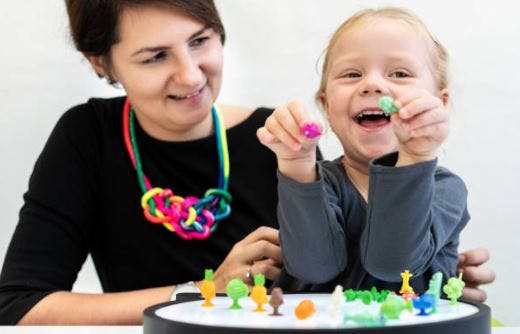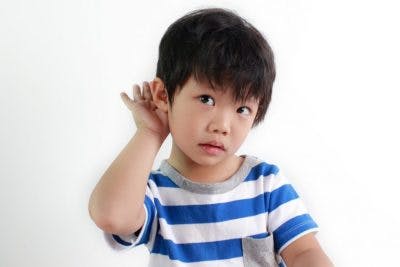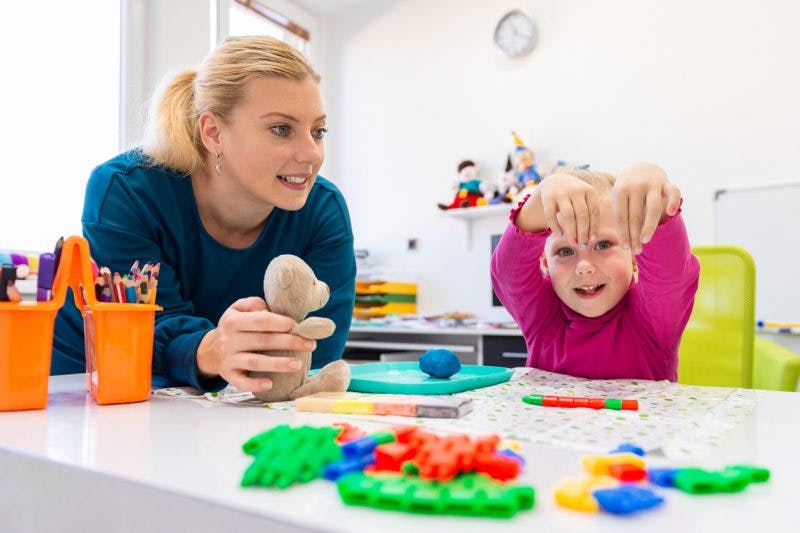Is it possible to have sensory problems due to cerebral palsy?
Although cerebral palsy is a motor disorder, it’s relatively common for children with CP to also have co-occurring sensory problems.
Generally, these deficits won’t be due to problems with the senses themselves, but rather from damage to the area of the brain responsible for processing sensory information.
Risks Associated with Sensory Problems and CP
Sensory processing abnormalities in children with cerebral palsy can come in the form of hypersensitivity or hyposensitivity.
Those with hypersensitivity may be avoidant of physical touch, crowds, and loud sounds because they have heightened senses. For example, those with a hypersensitivity to touch may not be able to tolerate a shirt tag touching them, while most individuals would not even notice the tag was there.
In contrast, those with hyposensitivity will have decreased sensory processing and may not respond to stimuli because the brain cannot process it. They require more sensory input for their brain to register it.
Sensory deficits can negatively affect a child’s:
- activity levels
- communication skills
- learning
- interactions with their surroundings
- behaviors
Sensory Problems Due to Cerebral Palsy

Not all children with cerebral palsy are going to have sensory deficits.
In fact, sensory problems and cerebral palsy aren’t even directly related.
Although they commonly co-occur, they’re caused by different sources of brain damage.
In this study of 96 children with cerebral palsy, sensory deficits were present in 41.7%.
Additionally, a high correlation was found between the severity of sensory problems and hand function.
Researchers concluded that “moderate to severe motor disability was associated with severe sensory dysfunction”.
In other words, more severe forms of cerebral palsy are associated with greater levels of damage to the brain, which increases the risk of co-occurring sensory impairments.
Furthermore, sensory processing difficulties may be more prevalent in those with more severe motor impairments as they are less able to actively use some of their senses to explore their environments.
Alternatively, sensory deficits may lead to a child being less willing or motivated to explore their environment. This may result in less overall movement (e.g. not using the hands as frequently to play if hypersensitive to touch), which could impede development of motor skills.
Types of Sensory Deficits Common in Children with Cerebral Palsy
Because sensory deficits can be caused by many sources of brain damage, people with cerebral palsy can technically have any form of sensory impairment.
However, some are definitely more common than others.
Vision Impairments

It’s suggested that up to 90% of all children with cerebral palsy have some sort of visual impairment.
While mild visual impairments are very prevalent, only about 10% will have a severe visual impairment.
Cortical vision impairments are the result of the brain not being able to process what the eyes see.
Children with cortical vision impairments may demonstrate delayed reactions, blank staring, difficulty recognizing familiar faces, an attraction to shiny or bright objects, and be overwhelmed by clutter.
Hearing Loss

There are 3 types of hearing impairments children with cerebral palsy can experience:
- Sensorineural hearing loss is the most common type of hearing impairment. It’s the result of nerve pathway damage in the inner ear.
- Conductive hearing loss describes when sound transmission in the middle and outer ear is interrupted before reaching the inner ear. Unlike sensorineural hearing loss, conductive hearing loss is usually temporary and can be treated.
- Mixed hearing loss describes when a person experiences symptoms of both sensorineural and conductive hearing loss. With mixed hearing loss, multiple areas of the ear are affected.
Hearing impairments can negatively affect your child’s communication skills if not properly managed.
Many hearing impairments can be improved through medications, hearing aids, surgery, or cochlear implants.
Tactile Impairments

Tactile impairments refer to problems with one’s sense of touch.
A tactile sensory processing problem makes it difficult for children to understand the characteristics of their surroundings, which will discourage them from interacting with their environment. Tactile defensiveness, which occurs when children are hypersensitive to touch, can especially hinder environmental exploration and interaction.
It is essential for children to explore what’s around them in order to develop sensory coordination and to understand what is safe or not. Exploration through touch also plays a strong role in the development of motor skills.
Poor Proprioception

Proprioception refers to one’s sense of body positioning and spatial awareness.
Proprioceptors (the receptors for this sense) are located in the joints and muscles.
Abnormal muscle tone will interfere with proprioception and impair balance, coordination, and posture.
Managing Sensory Problems in Children with Cerebral Palsy

Children can go to sensory integration therapy to improve their sensory processing skills.
Trained occupational therapists will have the child participate in activities specifically designed to stimulate the senses. Frequently, a multi-sensory approach is used, where more than one sensory system is being stimulated at a time.
The idea behind sensory integration therapy is that over time, continuous sensory stimulation will train the brain to rewire itself (neuroplasticity) and improve its sensory processing and regulation skills.
Part of sensory integration therapy may also include a sensory diet for home. A sensory diet, or a program including various sensory activities for a child to participate in throughout their day, is frequently used to ensure that children are getting an appropriate amount of sensory input each day. Sensory diets can also help increase the ability to process and regulate sensory input.
It’s crucial for parents of children with cerebral palsy to keep an eye out for symptoms of sensory problems like delayed reactions, avoidant or over-reactive behavior, and poor coordination.
Unlike adults who get neurological damage due to a traumatic injury, children with sensory deficits are generally born with them and don’t necessarily understand what it’s like to have typical sensory functions.
The younger you are, the more adaptable your brain is. Early intervention is key for improving sensory processing skills and preventing the negative consequences of sensory deficits from developing.
Hopefully, this article helped you better understand the link between cerebral palsy and sensory deficits. Although brain damage cannot be reversed, the brain can be trained to adapt with enough repetition. Good luck!










